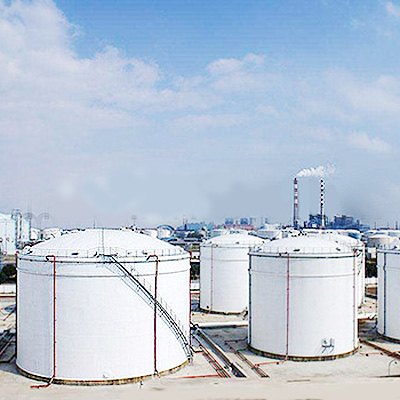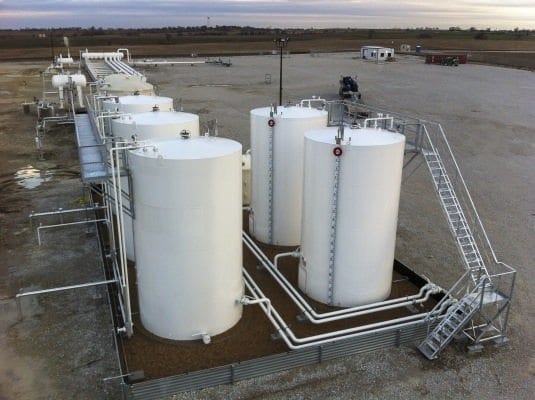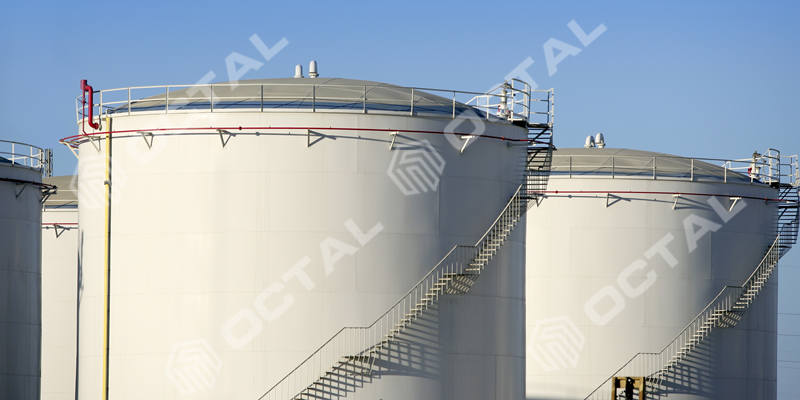Exactly How Welding Inspection Works: A Comprehensive Guide for Professionals
Welding inspection plays an essential duty in ensuring the security and dependability of bonded frameworks. It includes a methodical approach that consists of both aesthetic inspection and advanced screening techniques. Professionals have to familiarize themselves with essential criteria and guidelines controling the sector. Understanding the usual flaws that can occur during welding is vital. This guide will explore these aspects carefully, supplying insights right into the processes that support top quality and integrity in welding.
Recognizing the Value of Welding Inspection
While lots of may ignore the significance of welding examination, it plays a necessary role in making certain the honesty and security of bonded structures. Reliable welding inspection determines possible problems and defects that can jeopardize structural stamina and cause catastrophic failings. The inspection procedure includes different techniques, such as visual exams, ultrasonic screening, and radiographic analyses, each adding to the total analysis of weld high quality.
In addition to guarding the architectural stability, welding evaluation guarantees compliance with market standards and customer specifications. By making sure that welds meet needed qualities and resistances, evaluations assist preserve the integrity and long life of components in various applications, from building to aerospace. Furthermore, an extensive examination process promotes a culture of quality and liability among welders and producers. Inevitably, welding examination is not merely a step-by-step step; it is a vital technique that underpins the security and performance of engineered systems throughout diverse markets.
Secret Specifications and Laws in Welding Evaluation
The foundation of efficient welding examination hinges on adherence to established requirements and laws. Various companies, such as the American Welding Society (AWS) and the American National Specification Institute (ANSI), established forth standards that guarantee quality and safety and security in welding practices. Secret criteria, such as AWS D1.1 for architectural welding and ASME Area IX for stress vessels, give extensive standards for welding inspections, qualifications, and procedures. Governing frameworks, including those from the Occupational Safety and Health Administration (OSHA), mandate safety and security practices and worker protections in welding atmospheres. Compliance with these standards is important for accomplishing consistent weld high quality and reducing the danger of failures. In addition, global criteria like ISO 3834 additionally improve worldwide uniformity in welding inspection techniques. Professionals should stay educated concerning these laws to guarantee that their inspection approaches straighten with market assumptions and lawful demands, thereby protecting both workers and architectural honesty.
First Prep Work and Aesthetic Evaluation Techniques

Reliable welding examination starts with a comprehensive pre-inspection list that guarantees all necessary problems are fulfilled before the actual assessment happens. Following this prep work, visual defect recognition plays a crucial role in reviewing weld quality, permitting inspectors to find concerns such as cracks or incorrect blend. With each other, these techniques develop the foundation for an effective welding evaluation process.
Pre-Inspection List
Before commencing any kind of welding evaluation, a thorough pre-inspection checklist is necessary to guarantee that all required prep work are finished which aesthetic inspection techniques are efficiently used. Crucial element of this checklist include confirming the welding procedure spec (WPS), seeing to it all tools is adjusted and in good working condition, and verifying that the examiner possesses the needed qualifications. In addition, it is vital to assess any previous inspection records and to analyze the workplace for safety and security hazards. The inspector should also verify that all relevant documents, such as product certifications and assessment documents, is easily available. Completing this list aids to develop a solid foundation for a successful inspection procedure, improving the integrity of the outcomes obtained.
Visual Defect Recognition
An effective visual issue recognition process begins with mindful preliminary preparation and the application of well-known aesthetic evaluation techniques. Assessors ought to assure that the welding area is tidy and well-lit, as appropriate exposure is essential for detecting defects. A thorough assessment of the weld joint's surface allows for the identification of suspensions, such as splits, undercuts, or porosity. Assessors frequently make use of tools like amplifying glasses or mirrors to boost their view of hard-to-reach locations. In addition, they ought to be acquainted with the specific welding requirements and standards relevant to the job. By sticking to these approaches, inspectors can successfully identify prospective problems, guarding the integrity of the weld and compliance with market standards.
Non-Destructive Testing Techniques: An Introduction
Non-destructive testing (NDT) techniques play a necessary role in the welding evaluation procedure by making certain the integrity and dependability of bonded frameworks without creating any damage (API 650 Welding Inspection). These methods enable assessors to review the quality of welds while preserving the elements being taken a look at. Typical NDT approaches consist of ultrasonic screening, radiographic screening, magnetic bit testing, and dye penetrant testing, each offering distinct advantages
Ultrasonic testing utilizes high-frequency sound waves to find interior flaws, while radiographic testing utilizes X-rays or gamma rays to visualize the internal framework of welds. Magnetic fragment screening exposes surface and near-surface problems by applying an electromagnetic field and iron particles to the weld location. Color penetrant screening highlights surface-breaking problems with the application of a colored dye. With each other, these NDT approaches supply critical understandings right into weld top quality, enabling experts to make enlightened decisions concerning safety and compliance in welding applications.
Usual Issues and Their Ramifications
Determining common defects in welded joints is important for maintaining architectural stability and safety. Numerous flaws can arise throughout the welding process, each carrying possible implications for the total performance of the structure. Porosity, identified by little gas pockets within the weld, can weaken the joint and endanger its load-bearing capacity. Fractures may create because of thermal tension or inappropriate cooling, leading to prospective failure under anxiety. Incomplete blend takes place when the weld steel does not fully bond with the base product, resulting in weak joints that might not endure desired loads. Damaging, where the base metal is worn down, can additionally minimize the effective cross-section of the weld. Furthermore, too much reinforcement can produce stress focus that can result in failing. Recognizing these flaws promptly enables for corrective steps, ensuring the longevity and dependability of bonded structures in vital applications.
Devices and Equipment Utilized in Welding Examination
Effective welding assessment counts on a variety of specialized tools and devices to assure the quality and stability of welded joints. Crucial instruments include visual assessment devices, such as multiplying glasses and borescopes, which enable inspectors to very closely examine welds for surface flaws. Non-destructive screening (NDT) approaches, such as ultrasonic screening, radiographic screening, and magnetic fragment screening, are basic for recognizing internal flaws without damaging the material.
Measurement devices, consisting of calipers and weld gauges, assist analyze measurements and identify conformity with requirements. In addition, firmness testers examine the mechanical residential or commercial properties of welded joints. Personal safety tools (PPE) is additionally vital, securing the security of inspectors while working in possibly unsafe atmospheres (API 650 Welding Inspection). Each tool serves a certain purpose, jointly boosting the efficiency of welding assessment and adding to the reliability of finished jobs
Often Asked Questions
What Credentials Are Required to End Up Being a Welding Inspector?
To come to be a welding examiner, individuals typically require relevant qualifications, such as AWS CWI or CSWIP, together with experience in welding processes, design principles, and knowledge of assessment methods, safety requirements, and appropriate codes.
Just How Commonly Should Welding Inspections Be Carried Out?
Welding inspections need to be carried out routinely, preferably at various task phases, consisting of pre-weld, during-weld, and post-weld. Frequency might also depend upon industry like it requirements, task specs, and the intricacy of the welds involved.
Can Welding Defects Be Fixed After Inspection?

Yes, welding issues can commonly be repaired after evaluation. Relying on the seriousness and sort of flaw, appropriate methods such as remodeling or extra welding may be utilized to bring back architectural honesty and safety and security compliance.
What Industries Require Regular Welding Inspections?

Various industries, including construction, manufacturing, read more aerospace, and automotive, require regular welding evaluations - API 650 Welding Inspection. These examinations assure adherence to safety and security requirements and quality control, reducing dangers connected with structural integrity and operational efficiency in bonded elements
How Do I Choose a Welding Inspection Service?
To pick a welding examination solution, one need to consider qualifications, experience, certifications, and sector online reputation. In addition, examining client reviews and assuring the service meets pertinent criteria can assist guarantee top quality inspections and reliable outcomes.

While numerous might take too lightly the relevance of welding assessment, it plays an essential duty in ensuring the stability and safety and security of welded frameworks. Trick standards, such as AWS D1.1 for architectural welding and ASME Area IX for pressure vessels, supply thorough requirements for welding evaluations, credentials, and treatments. Efficient welding examination starts with a complete pre-inspection list that guarantees all needed conditions are met before the actual assessment takes location. Prior to beginning any kind of welding examination, a comprehensive pre-inspection checklist is vital to ensure that all needed prep work are completed and that visual evaluation techniques are efficiently employed. Non-destructive testing (NDT) approaches play an important role in the welding assessment procedure by making Website sure the stability and dependability of welded structures without creating any kind of damages.